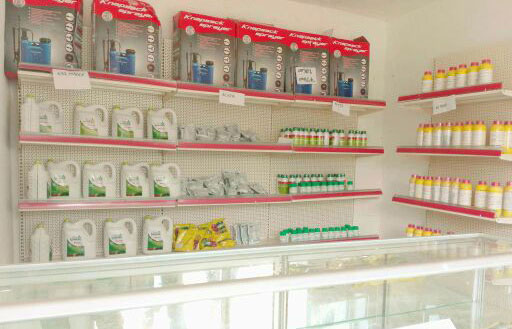
Fortune News | Mar 25,2023
Jul 18 , 2020
By HAGOS GEBREAMLAK ( FORTUNE STAFF WRITER )
The Ministry of Transport has partnered with a regional organisation that works on regional trade integration to work on improving freight service provisions along the Ethio-Djibouti corridor.
The Ministry signed an agreement with TradeMark East Africa in June for the implementation of the fleet management system, a centralised information system to regulate the trucks passing through the Ethio-Djibouti corridor, which hosts 90pc of the country's imports and exports. The organisation is expected to finalise the project by the end of June 2022.
The project will be implemented through three stages: system development, installation and implementation. With the agreement, the organisation will help the Ministry to establish the fleet management system.
TradeMark East Africa, a donor-funded nonprofit organisation working to improve trade in the region, is now conducting a study that focuses on the challenges to the freight system via the corridor, according to Tadesse Yemanu, country director for Ethiopia at TradeMark East Africa.
The organisation will also avail technological facilities to realise the implementation of the system. It will also deploy an online fleet management portal that links the importers and exporters at the Djibouti port.
In deploying the fleet management system, the company will help the Ministry institutionalise an integrated information management system that includes shipment information and the location of cargo at all times, the location of the trucks that carried the containers, and the number of goods at the port.
After the project is implemented, the customs authorities will not be required to physically check and measure the cargo trucks. It will enable the authorities to easily check the vehicles and levy tariffs via e-devices.
This will decrease the cost of transportation as well as shorten the time of shipment by reducing truck stoppages, according to Endalkachew Tsegaye, communications director at the Ministry.
“The Ministry has been challenged by the inefficient systems not to monitor the freight business vehicles along the corridor effectively,” said Endalkachew. “The system is aimed at enabling the Ministry to keep an eye on all the trucks efficiently."
In implementing the project, TradeMark East Africa will be dedicating an expert team to the Ministry. It will also facilitate the exchange of knowledge and experience with the East Africa Community member states and other countries on transport issues to build the capacity of the country's transport agencies.
The Ministry lacked technical and technological facilities to actualise an integrated and efficient freight management system, according to Endalkachew.
“The availability of technical expertise and experience is crucial in easily supervising the transportation sector,” he said.
Through the electronic platforms, exporters and importers can easily access shippers and transporters from their locations online and transport their cargo at the fastest times possible, according to the framework agreement signed between the two parties.
“Speedy transportation of goods will also benefit the port as many containers shall not be concentrated there,” said Tadesse.
TradeMark, which is funded by Belgium, Canada, Denmark, the European Union, Finland, Ireland, the Netherlands, Norway, the United Kingdom and the United States, will support the Ministry in installing technology innovations that will be used for loading and unloading containers.
The sector has been tied up with problems emanating from higher transactional costs and delays, according to Endalkachew.
The logistics operations of the country are relatively inefficient based on Ethiopia ranking 131 out of 160 countries, according to the World Bank’s Aggregate Logistics Performance Index. The country has seven operational dry ports that can accommodate 24,000 40-foot containers at a given time.
“It’s aimed at meaningfully decreasing the costs and delays along the corridors,” he said.
The absence of real-time tracking has been the major problem to the safety and efficiency of the freight sector, according to Endalkachew.
TradeMark, which works with governments, East African Community (EAC) institutions, the private sector and civil society organisations to increase trade by unlocking economic potential and reducing barriers to trade and increased business competitiveness, will develop and install GPS devices on the freight trucks to create a real-time tracking system, according to Tadesse.
TradeMark will also improve technical and material facilities to upgrade the ICT infrastructure of the Ministry.
The ICT infrastructure will be equipped with viable technologies to be capable of executing the aimed fleet management systems, according to Endalkachew.
The organisation is currently seeking funds for the project from development agencies, according to Tadesse.
The utilisation of efficient innovation technologies will upgrade the shipping and freight sector, according to Elizabeth Getahun, chairperson of the Ethiopian Freight Forwarders & Shipping Agents Association.
“The main problem to the sector is technical inefficiency emanating from the absence of advanced technologies,” says Elizabeth. “If the project is implemented appropriately, it would be a good deal to merchandise transportation.”
The project may bring about good results in terms of reducing transit time, cutting freight transportation costs, and bringing dependability to the logistics sector, according to Zewdie Shibre (PhD), an assistant professor of logistics management at Addis Abeba University.
"This can make the business sector comparatively competitive and efficient," he said.
What the logistics sector needs the most is a significant investment from the government, as it is the bloodline of the economy, according to Zewdie.
"Making the sector efficient has a multiplier effect on other sectors," said Zewdie.
PUBLISHED ON
Jul 18,2020 [ VOL
21 , NO
1055]

Fortune News | Mar 25,2023

Fortune News | May 17,2025

Fortune News | Jun 29,2019

Radar | Oct 26,2025

Radar | Jan 07,2023

News Analysis | Oct 13,2024

Fortune News | Oct 10,2019

Radar | Apr 08,2023

Commentaries | Jul 27,2024

Radar | Jun 27,2020

Dec 22 , 2024 . By TIZITA SHEWAFERAW
Charged with transforming colossal state-owned enterprises into modern and competitiv...

Aug 18 , 2024 . By AKSAH ITALO
Although predictable Yonas Zerihun's job in the ride-hailing service is not immune to...

Jul 28 , 2024 . By TIZITA SHEWAFERAW
Unhabitual, perhaps too many, Samuel Gebreyohannes, 38, used to occasionally enjoy a couple of beers at breakfast. However, he recently swit...

Jul 13 , 2024 . By AKSAH ITALO
Investors who rely on tractors, trucks, and field vehicles for commuting, transporting commodities, and f...

Nov 1 , 2025
The National Bank of Ethiopia (NBE) issued a statement two weeks ago that appeared to...

Oct 25 , 2025
The regulatory machinery is on overdrive. In only two years, no fewer than 35 new pro...

Oct 18 , 2025
The political establishment, notably the ruling party and its top brass, has become p...

Oct 11 , 2025
Ladislas Farago, a roving Associated Press (AP) correspondent, arrived in Ethiopia in...